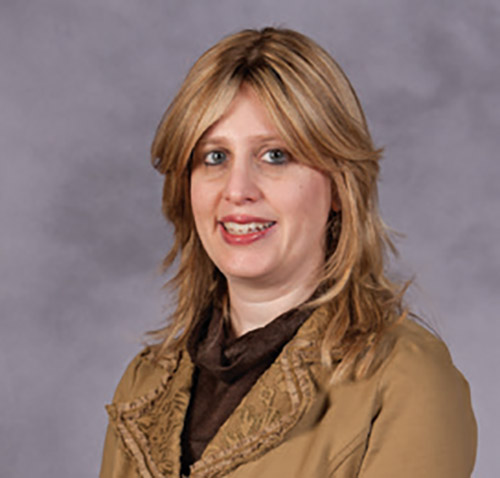
As educators, at home or in schools, we consider how to “be mechanech” (educate) our children by looking toward the “mechanech” par excellence, Avraham Avinu, featured in this week’s parsha. The pasuk in last week’s parsha, Bereishit 12:5, speaks of the “souls they made in Charan,” referring to the hordes of people Avraham and Sarah brought close to Hashem through their unique educational philosophy and practices. Avraham was, in essence, the founder of the Jewish people, and yet, the reason for Hashem’s choosing him, as noted in Bereishit 18:19, was simply because “ki yidativ l’maancha asher yitzaveh et bnav vet beyto acharav, For I have known him because he commands his sons and his household after him,” says Hashem. Avraham knew how to raise and educate his children so that the lessons he taught them would continue after him.
What was the secret to Avraham’s success, and how can we replicate his techniques in our own yeshivot? Masechet Avot 5:19 provides us with some insight into the central character traits of Avraham, which he transmitted to his children/students for all time. “Whoever possesses these three qualities is one of the students of Avraham Avinu… A generous eye, a humble spirit and a self-disciplined soul.” Nowhere does it speak of Avraham’s intelligence… although we gather he was brilliant. Nowhere does it mention his magnetic personality…although we know he must have had one to have attracted so many to believe in Hashem. Nowhere does it mention his SAT scores, his GPA and definitely not his IQ. In fact, this mishna does highlight his EQ, his emotional intelligence, a term originated in 1964 by Michael Beldoch, and popularized in 1995 in Daniel Goldman’s book of that name.
But that begs the question: Can emotional intelligence be taught? Can someone become a student of Avraham Avinu’s qualities? (Interestingly enough, the mishna does sound as if there is a genetic or innate component to these qualities—nature or nurture?) The answer is, of course, a resounding and necessary yes!! Emotional intelligence has four components, according to Salovey and Mayer, based upon their research. The ability to: 1) Perceive or sense emotions 2) Use emotions to assist thought 3) Understand emotions 4) Manage emotions.
When the EQ movement was born in the years after Goldman’s book, it gave birth to a new phenomenon called “SEL,” Social Emotional Learning, in schools. For the first time, educators were realizing that EQ may be more important than IQ in succeeding in life. Research on SEL in schools indicated children in schools with social emotional learning as part of their curriculum showed improved achievement scores, and many improved their grade point averages. Incidents of misbehavior and disciplinary action went down as well. Research indicates that skills like self-restraint, persistence and self-awareness are better indicators of success in life than academic performance. Children with strong social-emotional skills are more successful in their careers and marriages, face less mental illness and may even be physically healthier.
Educators and parents may worry, “If we take the time to implement SEL we take away from academic learning time.” No worries there! SEL has been found to have a tremendous positive impact on academic achievement and learning. When children are anxious or distressed, they are not available to learn. As psychologist David Caruso, the author of the Caruso Emotional Intelligence Test, asserted, “It is very important to understand that emotional intelligence is not the opposite of intelligence, it is not the triumph of heart over head; it is the unique intersection of both.” The SEL vision is not at all contrary to the academic and cognitive vision of growth we have for our children. They work in tandem.
The unique component regarding the SEL, implemented in my school and as well as in other schools, is that it does not simply focus on prevention programs, which tend to target a single issue. True social emotional learning, is, as Jennifer Kahn says in her article “Can Social Emotional Intelligence Be Taught,” “…to instill a deep psychological intelligence that will help children regulate their emotions. Educators and parents have long assumed that a child’s ability to cope with such stresses is either innate—a matter of temperament—or else acquired ‘along the way,’ in the rough and tumble of ordinary interaction. But in practice, Brackett says, many children never develop those crucial skills. ‘It’s like saying that a child doesn’t need to study English because she talks with her parents at home,’ Brackett told me last spring. ‘Emotional skills are the same. A teacher might say, ‘Calm down!’—but how exactly do you calm down when you’re feeling anxious? Where do you learn the skills to manage those feelings?’”
This social-emotional curriculum with directed lesson plans and goals should be designed with as much thought as is put into designing our academic curriculum. It is proactively woven into our students’ day-to-day classes, in addition to their weekly social/emotional lessons in advisory. We know that the key to this learning is not being taught the skills, but practicing and implementing the skills. Students need to repeat these skills over and over until they become automatic. The importance of practicing these SEL behaviors is demonstrated by Avraham in this week’s parsha in Bereishit 18:7, as “Then Avraham ran to the cattle, took a calf, tender and good, and gave it to the youth who hurried to prepare it.” Why did Avraham give it to the youth and not prepare it himself? Rashi comments that it was in order to train him to do mitzvot. The importance of children practicing the skills we teach them is essential for the skills to endure. A “one shot deal” speaker on a topic does not do the trick. A speaker on bullying is always impactful, but is not a substitute for a curriculum that helps the children learn skills as the bystanders, victims and even the bullies themselves. And while a presenter on the topic of kindness is always inspirational, it does not take the place of the creation of a culture of kindness in the building where it is “cool to choose kind.” Aside from the curriculum and classroom component, SEL happens in the playground, the lunchroom, the beit midrash during tefillah, and even in the hallways.
And, of course, SEL is seamlessly woven into our Judaic studies classes as well. The story of Yosef and his brothers is an opportunity for working with the students on how to deal with feelings of jealousy. As the students learn Sefer Shmuel and Dovid’s admission that he had sinned, it is a teachable moment to practice and learn the skills needed to truly apologize and take responsibility for one’s actions instead of blaming others. As our children learn to say Modeh Ani for the first time, gratitude skills (yes, it is a skill) are transmitted as well.
As the primary mechanchim of our children, we as parents need to be mindful of the SEL we are implementing in our own homes as well. Whether it is the manner in which we “debrief” a squabble between siblings or a discussion about current events at the Shabbat table, there are constant opportunities to teach and model social-emotional skills. “Children learn what they live.”
We believe, as Plato said thousands of years ago (but Avraham intuited much earlier), “All learning has an emotional base.” For the sake of the future success and happiness of our children, all our schools need to continue to support and champion the emotional curricula. After all, in schools we are in the business of “making souls,” not simply “brains,” as we raise “students of Avraham Avinu.”
By Dr. Aliza Frohlich
Dr. Aliza Frohlich is the director of guidance at Yavneh Academy’s middle school.













